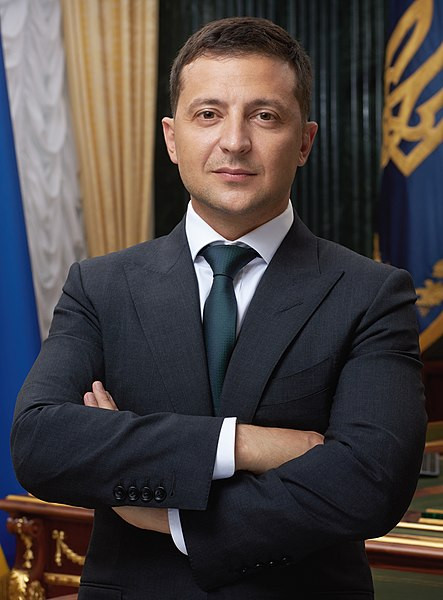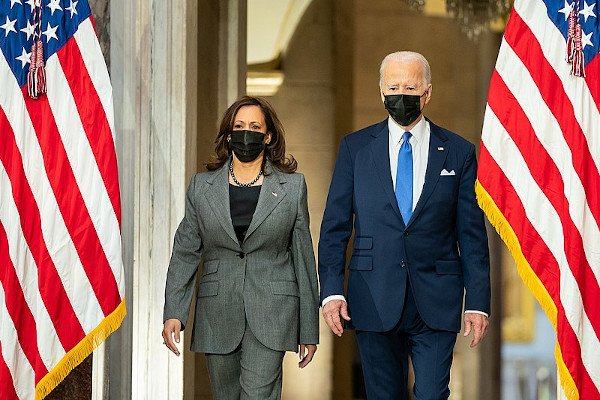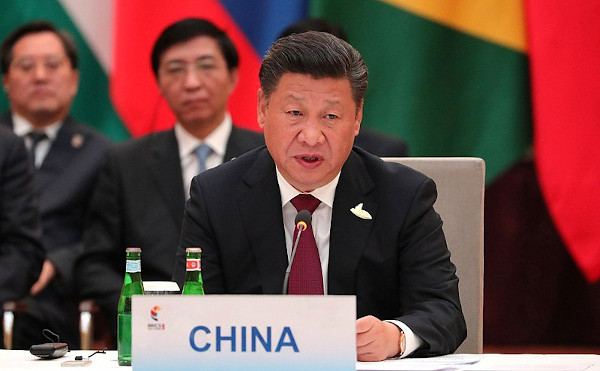Ukraine: A Deeper Look Into the Threat of a Potential World War
“I decided to conduct a special military operation. Its goal is the protection of people who have suffered eight years from abuse and genocide, from the Kyiv regime.” stated Russian president Vladimir Vladimirovich Putin.
Russia invaded Ukraine, just days after signing a cooperation agreement with China. The EU, NATO, and democratic allies, such as Japan, Australia, Taiwan and others have rallied to the U.S. side, imposing sanctions, amid discussions of increasing their military potential. While it is still unclear what China’s intentions are, it is possible that the Chinese regime will stand by Russia, forming an axis of authoritarianism, along with the Central Asian Republics and Collective Security Treaty Organization states, as well as Iran, North Korea, Venezuela, and Cuba.
Alternatively, Xi Jinping may distance his nation from Russia, sensing that being on the wrong side of this dispute could exclude him from economic opportunities in the West. As tensions escalate, it is also possible that China will seize on this opportunity to take Taiwan, forcing the U.S. to retire from the field, or fight a war on two fronts. So far, the sanctions are exacting a heavy toll on Russia, as the world waits to see if Putin will accept defeat, retreating back to Russia, or if he will escalate his attack, in order to save face.
On February 21, 2022, President Putin delivered a fiery speech, in which he claimed that his nation was threatened by the expansion of NATO and a world order that was increasingly anti-Russian. He reminded his listeners that Russia was one of the strongest nuclear powers on Earth. He then said that Ukraine had seized Russian territory and that he had no choice but to take it back, in order to ensure the safety of Russia.

The same day, he granted independence to two breakaway republics inside Ukraine, the Donetsk People's Republic (DNR) and Luhansk People's Republic (LNR), both of which have always been pro-Russian and have had Russian support. He then deployed troops to these regions, calling them “peacekeepers.” On February 24, Russia invaded Ukraine, with Russian forces hitting multiple targets, with missile and artillery barrages. Russian paratroopers dropped into the Hostomel airport in the Kyiv region, while soldiers seized the Chernobyl former nuclear power plant.
Since 2014, Russian leaders have been obsessed with Ukraine, citing historical precedent that would potentially justify an invasion. During this time, Putin has been supporting an undeclared war within the borders of Ukraine, backing ethnic Russians and pro-Russian separatists, fighting against the Kyiv government. Over the past eight years, roughly 14,000 people have been killed
In July, Putin published a paper, claiming that Russians and Ukrainians are “one people”, and that parts of modern-day Ukraine occupies land that historically belonged to Russia. He went on to say that an independent Ukraine could only exist within the context of an agreement with Russia. In October 2021, former-President Dmitry Medvedev published a paper, questioning the legitimacy of Ukraine’s borders. For several weeks leading up to the invasion, around 100,000 Russian troops were stationed on the border.
Much of the Ukraine-Russia issue is one of identity. Only the most eastern part of Ukraine was ruled by Russia. A significant percentage of the people there speak Russian and many follow the Eastern Orthodox religion of the Moscow Patriarchate. In total, only about 14% of Ukrainians identify as Russian. The vast majority of the population, over 77%, identify with being Ukrainian and European, rather than Russian. The two largest religions in the region are Orthodoxy of the Kyiv Patriarchate, at 29%, and those who identify as just Orthodox at 24%.
At the end of World War II, Russia wanted assurances that NATO would not shift eastward, threatening Russian territory. After the fall of the Soviet Union, however, Ukraine and other Eastern European nations became independent, removing the buffer zones between Russia and NATO. Romania, Bulgaria, Poland and the Baltics have all become NATO members, and Russia sees this as a security concern.
Since the invasion, former President Dmitry Medvedev said Russia should seize the assets of foreigners from unfriendly countries. He also stated that Russia had no further need of diplomacy and that Moscow should close all its overseas embassies. It is unclear if the former president has any influence on policy, but it seems that the country may be headed the way of North Korea, an isolationist, yet belligerent state.

Western Sanctions
President Biden pledged that "We will limit Russia's ability to do business in dollars, euros, pounds, and yen…We're going to stunt the ability to finance and grow the Russian military." The administration is bringing a host of sanctions against Russia. Additionally, the U.S. is shifting US equipment and troops, already in Europe, to support Baltic allies, Estonia, Latvia, and Lithuania. Under an executive order, US trade and investment in the breakaway republics is prohibited. For the time being, the greatest threat in the U.S. arsenal of sanctions, removing Russia from the SWIFT payment system is being delayed. If implemented, this would essentially make it impossible for Russia to import or export anything.
America’s stance on Russia has rallied democratic allies. The U.K., EU, Japan, Australia, Canada, and others are moving forward with sanctions. European Commission President Ursula von der Leyen said the EU sanctions would include freezing Russian assets and preventing Russian banks from accessing European financial markets. The U.K. is also planning to freeze the assets of banks and individuals financing the region. Germany has agreed to shut down the Nord Stream 2 pipeline, which delivers gas from Russia to Europe. Russia is Europe’s number-one supplier of natural gas. Shutting down the pipeline will do tremendous damage to the Russian economy.

Economic Impact Outside the Region
The effects of the war are being felt beyond the region with hundreds of thousands of refugees fleeing to Poland and other nearby nations. Global stock markets dropped, with the Dow falling 700 points immediately after the invasion. Grain exports from the region will be disrupted, threatening global wheat supplies. In America and the rest of the world, gas prices are rising to levels not seen in years.
The China Connection
Beijing’s reaction to the crisis was to refuse to call it an invasion, blaming the US, rather Russia for increased tensions. China abstained from a UN vote condemning the invasion. And the former editor of the Chinese Communist Party news site, Global Times, applauded Putin’s actions, saying that the he had “broken the deadlock” and demonstrated “Russia’s strategic determination”.
In 2020, Chinese direct investment in Russia exceeded $12 billion. China is Russia’s largest trade partner in both imports and exports, with total trade reaching $108 billion in 2020. The two countries are committed to increasing this number to $200 billion over the next four years. China is the world’s largest oil importer, and in 2021, Russia’s oil exports to China exceeded $36 billion. Russia is a member of the Shanghai Cooperation Organization (SCO), the Belt and Road Initiative (BRI), both are part of Brazil, Russia, India, China, South Africa (BRICS). The two countries have had joint military exercises, but do not have a formal mutual defense agreement. Just before the invasion, Russia and China renewed a 20-year-old friendship treaty.
Furthermore, China stands ready to dampen the impact of the sanctions by purchasing an additional $117.5 billion worth of gas from Russia. It has also removed restrictions on imports of Russian wheat and barley.
If Western sanctions prevent Russia from earning money through exports, Moscow will become completely dependent on China. Many experts believe that China may take advantage of the situation to invade Taiwan. Beijing needs Russia’s support on the Taiwan issue, and the Ukraine crisis ensures that it will have it. Next, China will also increase its energy security through the construction of the Power of Siberia-2. The new pipeline will transport a greater quantity of gas from China to Russia, allowing China to avoid shipping gas through the Strait of Malacca, an area patrolled by the U.S. Seventh Fleet.

One possible outcome of the Ukraine crisis is the establishment of two camps; allies of the U.S., opposed to a China-lead axis. The U.S. coalition would include NATO, the EU, as well as Australia, Canada, Japan, Taiwan, and other democracies. On the Chinese side would be North Korea, Burma, Venezuela, Iran, and Vietnam. These would be combined with Russia’s allies, including Cuba, the Collective Security Treaty Organisation (CSTO) nations, Armenia, Belarus, Kazakhstan, Kyrgyzstan, and Tajikistan, as well as the remaining Central Asian Republics, Turkmenistan, and Uzbekistan. These nations are within Russia’s political sphere, and also depend on trade with China.
Vietnam and India both dislike China and have been moving into the U.S. sphere of influence, but both depend on Russia for much of their arms purchases. If a China-Russia axis develops, it is uncertain if their distrust of China would drive them to choose the West over Russia.
On the other hand, Putin would probably not be content to play second fiddle in a Chinese-lead world order. Furthermore, the Power of Siberia-2 will be financed by China, creating a debt that Russia will be repaying until 2050. The question is whether or not Putin would be willing to make his country into a China debt-slave, while subordinating himself to Xi Jinping.
President Biden has hinted that countries that continue to support Russia will also deal with U.S. sanctions. This leads to another possible outcome, that Russia could become so mired in Western sanctions that it would be geopolitical suicide for China to maintain close relations with it. In this case, Beijing may voluntarily distance itself from Russia.
No one can guess Putin’s next move. But the U.S. reaction will determine the impact this crisis will have on the history of the world. If the U.S. shows any sign of weakness, Xi may feel emboldened and move on Taiwan. However, if the U.S. continues its show of strength, Russia may match strength-for-strength, escalating the conflict to a wider war. China may side with Russia in a military conflict, or may act unilaterally, to take Taiwan, placing the U.S. and its allies in the unenviable position of fighting a war on two fronts, against the world’s number-two and number-three military powers.
In the case of any weakness from the U.S. and its global allies, Ukraine will then lose its sovereignty and a terrible precedent will be established: that authoritarian regimes can capture territory whenever they wish, and that Western powers are just paper tigers.
Author Bio:
Antonio Graceffo, a Highbrow Magazine contributor, is a Ph.D. and also holds a China-MBA from Shanghai Jiaotong University. He works as an economics professor and China economic analyst, writing for various international media. Some of his books include: The Wrestler’s Dissertation, Warrior Odyssey, Beyond the Belt and Road: China’s Global Economic Expansion, and A Short Course on the Chinese Economy.
For Highbrow Magazine
Image Sources:
--MaxPixel.net (Creative Commons)
--Ministry of Defense Ukaine (Wikimedia, Creative Commons)
--president.gov.ua (Wikimedia, Creative Commons)
--Whitehouse.gov (Wikipedia, Creative Commons)
--Kremlin.ru (Wikimedia, Creative Commons)































































































































































































































































































































